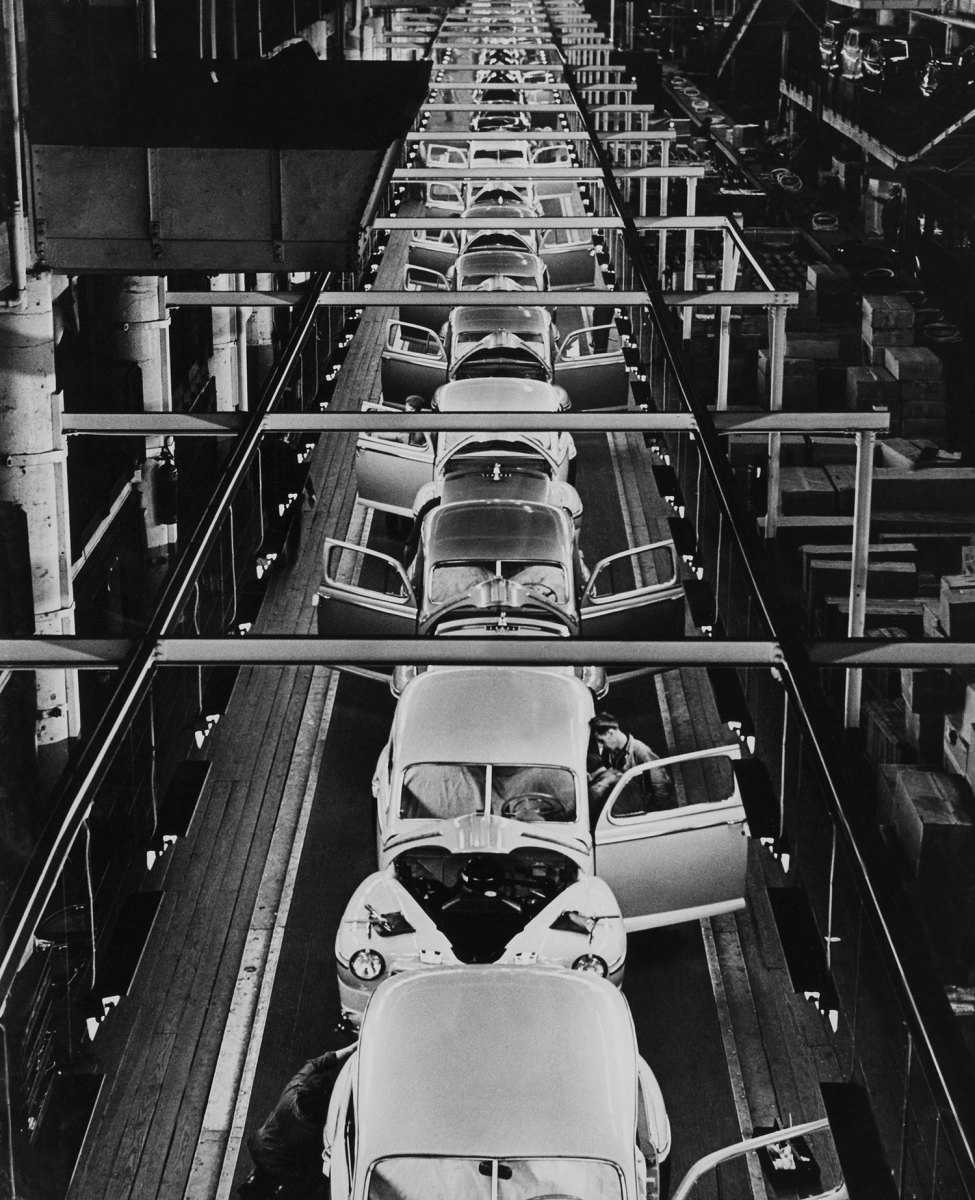What’s So Great About Manufacturing?
Democrats and Republicans disagree on a lot, but leaders of both parties are as keen now as they were decades ago to embrace manufacturing jobs.
G.O.P. Presidential candidates, including Jeb Bush and Marco Rubio, have spoken of a “renaissance” in American manufacturing; Rubio, for his part, told a Los Angeles audience in April that taxes and regulations need to be relaxed to create more factory jobs. Meanwhile, a group of Democratic senators have joined forces with labor unions and some big businesses to support an ongoing campaign, backed by legislation, called Manufacturing Jobs for America (M.J.A.). “America’s manufacturing sector has enormous potential to create new jobs and accelerate our economic recovery,” the campaign declares.
The number of manufacturing jobs in the U.S. has increased modestly the past few years, but when parties offering different economic visions rush to take credit for a renaissance, it suggests that some kind of larger deception is at work. To many Americans who’ve worked in factories, including me, the hype feels misplaced and anachronistic. What few politicians will tell you is that most factory jobs are decidedly unpleasant. Having any job usually beats unemployment, of course, and today’s factory workers are far better off than those who toiled in the nineteenth century’s dark Satanic mills, but their jobs often epitomize what Karl Marx identified as the alienation of the laborer from his or her labor. They lead the human employee to be treated, in the enduring phrase of Marx and Friedrich Engels, as “an appendage of the machine.”
It says something about the nature of the work that so many manufacturing tasks have proven to be replaceable by automation. Machines are better equipped to handle numbing repetition, and are immune to the unsafe and unhealthy conditions of much industrial work. Despite the advent of modern workplace-safety regulations, factories remain likely, for example, to damage employees’ lungs and hearing. (In the screw-machine factory where I worked in college, there was an earplug dispenser on a wall, but anyone who wore plugs was considered a wuss.) Furthermore, workers in low-autonomy, repetitive manufacturing jobs display disproportionately high rates of alcoholism, drug abuse, and depression.
Moreover, it’s evident that an advanced, twenty-first-century economy can grow even as manufacturing shrinks. According to the Bureau of Labor Statistics, there were 17.2 million manufacturing jobs in the United States twenty years ago; today the figure is 12.3 million. Yet America’s gross domestic product during that period rose from about ten trillion dollars to more than sixteen trillion, adjusted for inflation.
Why, then, is America so in love with manufacturing jobs? Historically, manufacturing played a unique and vital role in economic development. Some economists, particularly those influenced by Nicholas Kaldor, who taught at Cambridge and developed a set of “laws” about economic development, emphasize that there is a strong correlation between the health of a country’s manufacturing sector and the pace of its economic growth. And common sense tells us that few countries have joined the world’s élite solely by farming or extracting natural resources. Manufacturing is also vital during wartime, when it’s important for a country to have access to its own supply of tanks, bombers, and materiel. In addition, producing physical objects holds a nostalgic, psychological attraction.
None of this, however, has much to do with why today’s politicians tout manufacturing. Its main attraction for them, and for workers, lies in its perceived economic benefits. “Workers in manufacturing jobs earn 24 percent more in annual pay and benefits than the average worker in other industries,” the M.J.A. campaign claims, citing figures from the National Association of Manufacturers. Many basic factory jobs also require little skill, training, or language ability, which means that most adults can perform them. Because unskilled workers still make up a significant portion of the American workforce, manufacturing is for millions of people, the best economic choice available.
There’s nothing intrinsic to assembling widgets that guarantees higher wages, though. On the contrary: one of the main reasons that the U.S. has lost so many manufacturing jobs in recent decades is that the same work can be done elsewhere for a fraction of the cost. Manufacturing pays better than many low-skilled jobs in large part because it was for a long time a highly unionized sector, and workers were able to lock in higher wages over years of collectively bargained contracts. Yet even that advantage is not what it once was. A manufacturing employee today is far less likely than a government employee to be represented by a labor union. (You probably won’t hear a lot of political rhetoric, even from Democrats, about how we need more well-paying government jobs, however).
Indeed, some of the jobs created in the recent manufacturing “renaissance” are distinguished by their low pay. When Los Angeles passed a law this year that will raise the minimum wage to fifteen dollars an hour by 2020, some local apparel manufacturers grumbled that they would move their operations outside the city limits to avoid paying more than the state’s minimum wage, which will rise next year to ten dollars an hour. If these businesses make good on their threat, Los Angeles could end up as a city in which fast-food workers are better paid than manufacturing workers not far from its borders.
As anomalous as that situation may appear, it might help us rethink some outdated notions of work and value. If our society’s goal is good wages and benefits, there’s not much point in fretting about whether the jobs our globalized economy creates are in the manufacturing sector. The deeper challenge is to find ways to insure that the jobs created by the American economy pay well and promote social goals such as health, the environment, and worker satisfaction, regardless of sector. The resistance to higher wages among some of Los Angeles’s producers suggests that this won’t be easy in manufacturing. To the extent that a lack of skills in all areas holds back American workers from higher wages, it could take generations for the workforce to develop those skills. Still, the problem of low and stagnant wages won’t disappear or get any easier by continuing to pretend that manufacturing ought to be our only, or even our highest, priority.










Leave a Reply
Want to join the discussion?Feel free to contribute!